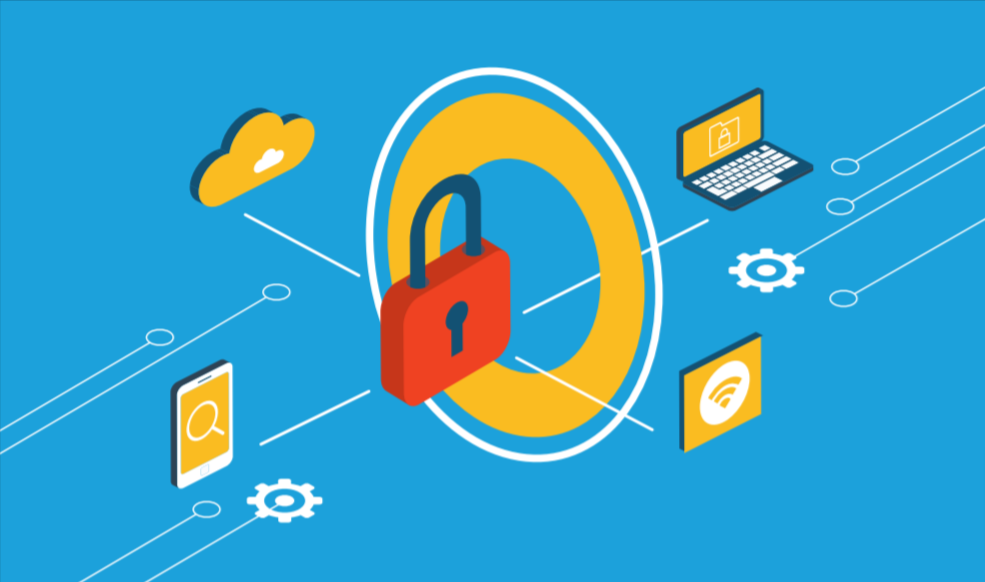The importance of security in the current application development lifecycle cannot be undermined. Businesses are getting more complicated, and there are always new things popping up in the world of web applications.
While on the one hand, it’s good that creating modern-day apps is no easy feat, security concerns and vulnerabilities are on the rise on the other. Creating applications that are not only fast but also secure is both complex and challenging.

Whether you want to test the security of your mobile apps or web apps to safeguard them from online fraud—you need a reliable security testing tool.
In this blog post, we explain what security testing is and 10 reasons to start using security testing tools to make a web or mobile application more secure.
Recommended reading: How DevOps has changed the way app security works
What is security testing?
Security Testing is a kind of Software Testing that helps in discovering online frauds, risks, threats, or vulnerabilities in a (software) application, in order to save it from potential attacks from intruders. Having proper security testing in place helps ensure that all weaknesses and loopholes of the software are identified as soon as possible.
If neglected, it can result in incorrigible losses of revenue, reputation, or even information. Popular types of security testing are—
- Vulnerability scanning. Inspecting possible points of exploit across a computer or network to detect security holes.
- Security scanning. Understanding how secure a website, network, or web-based program is from vulnerabilities.
- Penetration testing. A pen test is a simulated attack against your apps, networks, or computer system to find any vulnerabilities that could be easily exploited.
- Risk assessment. Identify, assess, and execute critical security controls for mobile or web-based applications.
- Security audit. A technical assessment, either done manually or otherwise of a computer system or an application.
Recommended reading: Best app security tips for 2022
10 reasons to start using security testing tools today

#1 Great cost savings
Security testing tools are a key component in a software development lifecycle. Deploying it right at the early stage can highlight bugs right from the start, and thus save costs.
When a flaw or a bug is identified beforehand, the developer can work on it at the earliest and fix it before it becomes a bigger issue, like compromising the privacy of the users. Any big losses (both in terms of time and money) in the future can be efficiently avoided.
#2 Reveal vulnerabilities
Security testing methods like penetration testing examine any weaknesses in the mobile or web application configurations and the network infrastructure. Not only this, it also examines the actions of the team members that could cause data breaches or if there has been any malicious infiltration. Once done, you’ll get a report that discloses any security vulnerabilities in your app so that you can gauge the kind of software and hardware improvements that need to be made. Along with that, it also helps you understand the kind of policies that would be required to strengthen overall security.
#3 Indicates real risks
Security testers identify vulnerabilities and try to exploit them. Doing so gives them a solid understanding of how an attacker can commit a data breach or get involved in malicious practices in real time.
For example, you can uncover the ease or difficulty of exploitation. A novice attacker may get access sensitive to data and be able to execute operating system commands, but might not be able to commit further breaches. And the reason for this is that any vulnerability that has high-risk potential, does not necessarily have to be risky simply because exploiting it would need expert knowledge.
#4 Test the capability to detect attacks early on.
Detecting attacks and responding on time cannot be overlooked during an application development process. Because delays can be detrimental. As and when an intrusion is detected, it is crucial to investigate the matter. But why go that further? That is why security tools let experts test the effectiveness of the application’s protection strategy. And feedback from such tests gives a deep dive into the steps that need to be taken to enhance defense.
#5 Ensure business continuity
Running businesses is no child’s play. You need to make sure that the operations are running smoothly, there is proper network availability, round-the-clock communication, and—of course, access to resources. So, every time an online fraud deters your business operations, there is a direct impact on the business, and sometimes it is hard to bounce back quickly. Unexpected downtime is scary after all. By revealing potential frauds or breaches early on, you can be sure that your business operations will not suffer losses. Consider security testing to be a “business continuity audit.”
Recommended Reading: Become an Information Security Analyst By Following These 5 Tips
#6 Expert third-party opinion
When a problem is detected by a team member or anyone within the organization— the management is not as quick to fix the issue. That is why a security report from a 3rd party expert can have a much larger influence on management.
#7 Third-party code security
AST and application security testing practices are a must for organizations that use any third-party code in their applications. Trusting any part from a third party without security checks is like driving a car without a seatbelt. No matter the source of code, be it commercial or open source— it is important to ensure that it is secure. Security testing tools help you scan third-party codes similar to how you scan your own. If any issues are detected, you can choose to apply patches, take recommendations from the vendors, switch components, or simply choose to create a solution yourself.
#8 Adhere to necessary regulations or certifications
Different industries have different compliance requirements (be it eCommerce or banking). So, there’s a possibility that your industry may need a certain level of penetration testing to meet legal compliance requirements. For example, PCI regulations or ISO 27001 standards, these policies and regulations require all managers and system owners to perform proper penetration tests at regular intervals and this ensures timely security reviews.
#9 Retain and build customer trust
Data breaches can pose a negative effect on your brand. It affects the confidence of suppliers, customers, and of course partners too. Or even worse, you may lose customers because of your history of being unable to identify potential data breaches or cybersecurity-related mishaps early on. But, if your company is known to have stringent and systematic security examinations and penetration tests, you can rest easy knowing that your partners, suppliers, customers, and all other stakeholders are not going anywhere.
Another important reason to conduct Security testing is to ensure customer trust. Safeguarding your company’s reputation and holding onto your customer base is very crucial and security testing plays a very essential role in it. Not only is security testing often a requirement to get accredited and certified, but it also ensures that your company has a solid security system that helps gain and maintain a customer base, and hence customer trust.
#10 Reveals techniques that work
Security testing is not just about detecting vulnerabilities, you can also get a solid understanding of what techniques have paid off. And consecutively, these techniques can be further deployed or utilized in future web or mobile apps too. Security reports provide a comprehensive overview of both the positive and the negative. It not only targets or pinpoints the problems but also helps you understand what works.
Key features of a good security testing tool
- Secure and privacy compliance CAPTCHA
- Fake account creation and bot protection
- Out-of-the-box protection modes for different settings
- Protection against ATO (account takeover attacks)
- Safeguarding against card fraud and credential staffing
- Block vulnerability scanning threats
- Detect scalping attacks and secure endpoints
Wrapping up

Incidents like cyberattacks and ransomware are perenially increasing as technologies evolve. That is why an application development process is incomplete without a proper security testing process.
Truth be told, security testing is all about application hygiene. Organizations need to invest in proper security checks because neglecting it can mean compromising the security of your organization, and of course the ultimate users.
Applications carry a substantial amount of real data about the public, and that is exactly what presents the need for security with the best possible protocol.
Security testing tools equip mobile and web apps with real-time protection against any type of online fraud. Consider this your sign to invest in a security testing tool today.




Leave a Comment